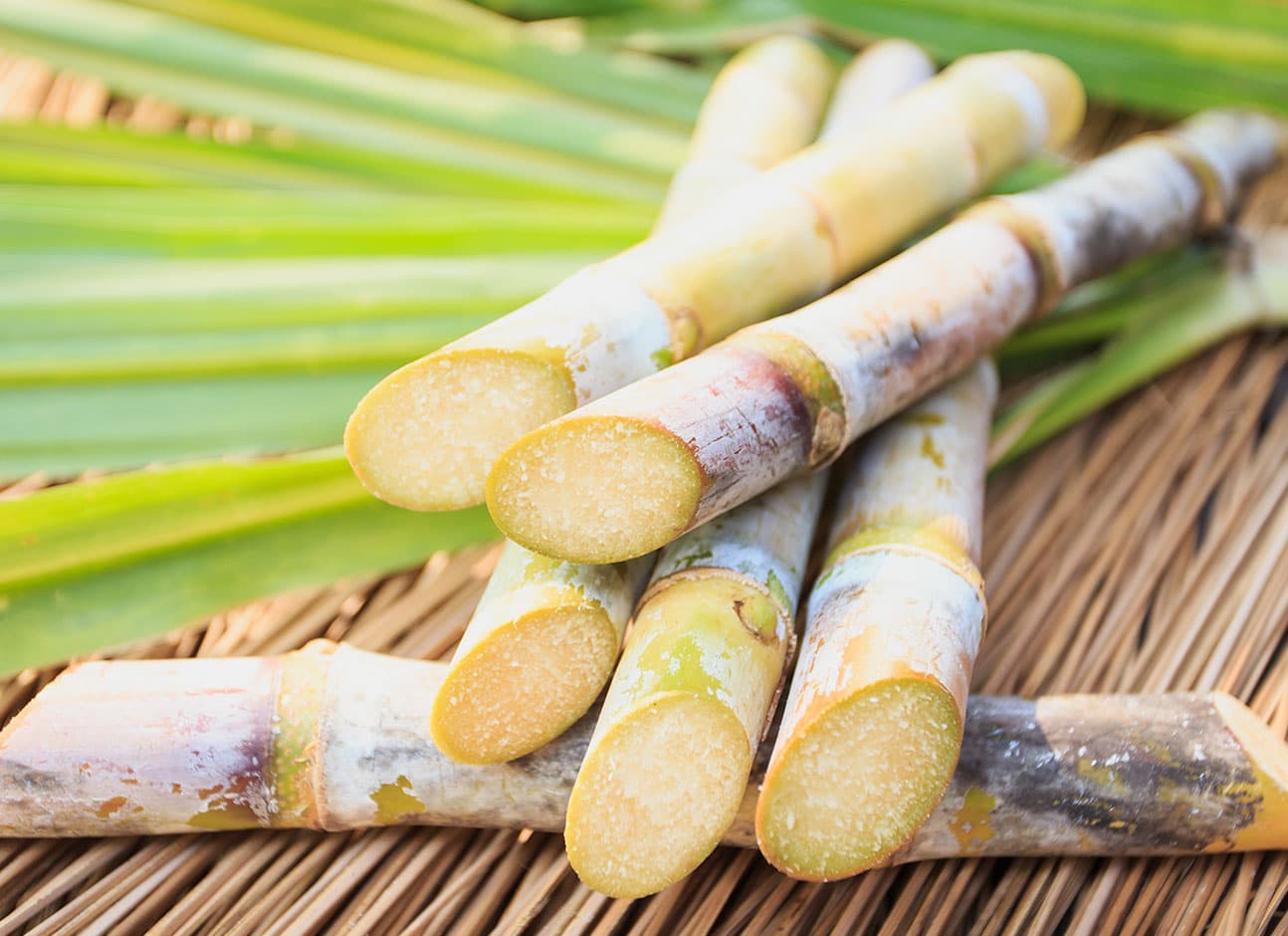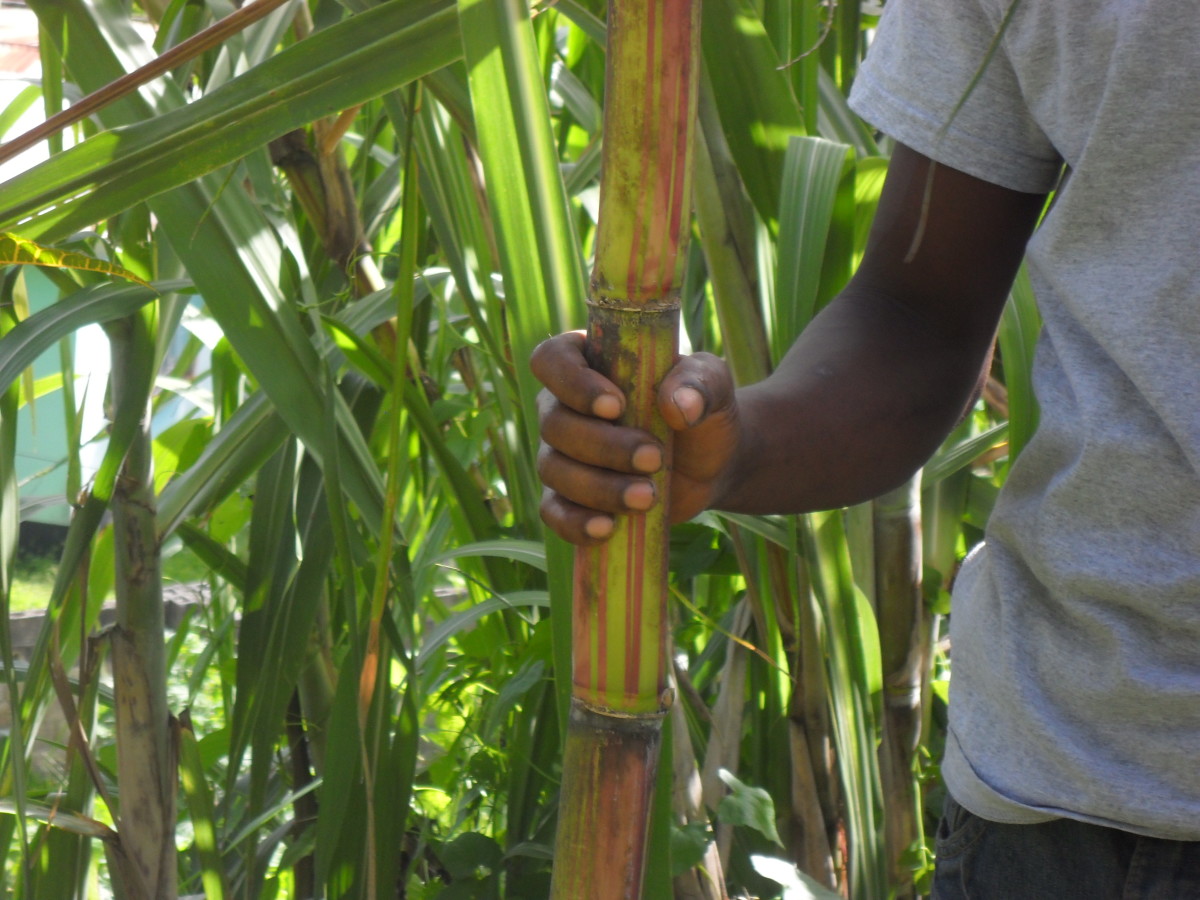Understanding How Sugar Canes Work: What Are Sugar Canes Utilized For in Food and Beyond?
Sugar canes are important to numerous aspects of both culinary and commercial methods. Their flexibility allows them to be transformed into sweeteners, drinks, and even biofuels. As one explores the journey from cultivation to handling, the diverse applications of sugar canes reveal an intricate interaction in between farming and sector. The ramifications of sugar walking cane production prolong past mere utility, elevating questions about environmental sustainability and economic impact.

The Background and Origin of Sugar Canes
Although frequently considered provided in modern diets, the history and origin of sugar walking sticks disclose a complicated journey that spans hundreds of years. Indigenous to Southeast Asia, sugar walking stick was first grown around 8000 BCE, with its wonderful juice coming to be very valued by very early people. By the first millennium AD, it infected India, where it was refined right into taken shape sugar, a significant advancement that changed its use and profession. The intro of sugar cane to the Mediterranean happened around the 7th century, thanks to Arab traders, that identified its financial potential.During the Age of Expedition, European colonists established sugar ranches in the Caribbean, significantly influencing international profession. By the 17th century, sugar ended up being a standard product, sustaining economies and affecting social structures. The tale of sugar walking canes is intertwined with agriculture, commerce, and cultural exchanges, marking its value fit modern financial systems and cooking methods.

Growing and Collecting Practices
The cultivation and harvesting of sugar canes entail several essential techniques that determine the top quality and return of the plant - What Are Sugar Canes Used For. Trick aspects consist of efficient soil prep work techniques, specific planting methods, and reliable harvesting techniques. Comprehending these practices is crucial for enhancing manufacturing and guaranteeing sustainability in sugar walking cane farming
Dirt Prep Work Techniques
Effective soil preparation methods are important for successful sugar walking stick farming, as they lay the foundation for healthy development and suitable return. The procedure begins with dirt screening to examine nutrient levels and pH equilibrium, permitting customized modifications. Tilling and raking are then utilized to freshen the dirt and break up compaction, improving root infiltration. Integrating raw material, such as compost or well-rotted manure, boosts dirt fertility and structure. Additionally, appropriate water drainage systems are crucial to avoid waterlogging, which can hinder cane growth. Cover cropping may likewise be utilized to reduce weeds and improve dirt health and wellness. These techniques collectively ensure that sugar walking stick has the ideal environment to grow, causing durable plant wellness and increased performance.
Planting and Development
Successful growing and growth practices are necessary for making the most of the yield of sugar walking cane. The process begins with selecting healthy seed canes, which are segments of mature stalks rich in buds. These seed canes are usually planted in well-prepared soil, preferably at a deepness of 4 to 6 inches, ensuring adequate dampness and oygenation. Sugar walking cane flourishes in cozy climates with ample sunshine and needs consistent irrigation, specifically during droughts. Fertilizing with potassium, nitrogen, and phosphorus is essential to advertise durable growth. Weed control is also important, as competitors can impede advancement. Normal tracking of plant health and dirt conditions allows for prompt interventions, ultimately bring about an effective plant that meets market demands.
Gathering Methods
Collecting sugar walking cane requires cautious planning and execution to assure maximum yield and high quality. Normally, the harvest happens when the walking cane reaches excellent sugar material, frequently in between 12 to 18 months after planting. There are 2 key methods: guidebook and mechanical harvesting. Hands-on harvesting entails laborers making use of machetes to reduce the stalks at ground degree, guaranteeing marginal damage to the plant and dirt. In contrast, mechanical harvesting employs specific makers that reduced, slice, and deliver the walking cane, raising efficiency and lowering labor costs. Mechanical approaches can lead to higher soil compaction and loss of nutrients. Despite the method, prompt harvesting is essential, as delays can lead to reduced sugar high quality and raised vulnerability to illness and parasites.
Handling Methods for Sugar Removal
The processing of sugar cane is a vital phase in sugar production, incorporating a number of vital techniques - What Are Sugar Canes Used For. Originally, harvested walking stick undertakes juicing and crushing to extract its sweet liquid. This juice after that continues with filtration and formation, changing it right into the sugar most commonly made use of today
Collecting Sugar Walking Cane
Sugar walking stick collecting marks an essential stage in the production procedure, where timing and technique play essential roles in making best use of yield. Generally, the harvest takes place when sugar content is at its optimal, which differs based upon climate and growth problems. Workers use customized devices or handbook tools to cut the cane at the base, ensuring minimal damages to the plant. Appropriate method is vital; cutting expensive can lower the quality and amount of the sugar removed later. After cutting, the walking cane has to be transported promptly to refining facilities to avoid perishing and sugar destruction. The performance of the harvesting process substantially affects the overall productivity and success of sugar cane farming, making it an essential focus for manufacturers.
Juicing and squashing
When sugar walking stick is harvested, the next essential action entails crushing and juicing to draw out the sweet liquid that includes sucrose. This procedure commonly utilizes heavy equipment made to squash the stalks, damaging down the coarse framework and releasing the juice. Rollers or mills apply considerable stress, enabling the walking cane juice to spurt while dividing the fibrous deposit, referred to as bagasse. When smashed, the cane is commonly subjected to a collection of pressing stages to optimize juice removal. The collected juice is abundant in sugar and might include pollutants, which will be dealt with in later processing actions. Generally, juicing and crushing are critical techniques that transform gathered sugar cane into a fluid kind ideal for further refinement.
Purification and Formation
Filtration and crystallization are critical processes in changing raw walking stick juice right into polished sugar. After extracting juice from crushed sugar canes, the liquid has pollutants such as plant proteins, fibers, and minerals. To achieve filtration, the juice goes through information, where heat and lime are added to precipitate contaminations, which are after that removed. The cleared up juice is then focused via dissipation to create a find out thick syrup.Next, condensation occurs, where sugar crystals form as the syrup cools down. This procedure usually entails seeding the syrup with existing sugar crystals to advertise consistent development. The resulting crystals are divided from the staying molasses via centrifugation, yielding pure sugar. This polished item is then dried and packaged for numerous culinary uses.
Culinary Uses of Sugar Canes
While often linked mainly with sweeteners, sugar walking canes supply a versatile range of cooking applications beyond their role in sugar manufacturing. Fresh sugar walking stick can be juiced, yielding a sweet, stimulating beverage appreciated in lots of exotic regions. This juice offers as a base for smoothie mixes and cocktails, adding a distinct flavor profile.Additionally, sugar walking cane syrup, stemmed from simplifying the juice, is utilized as an all-natural sugar in different dishes, from sauces to desserts. The syrup imparts an abundant, caramel-like flavor, improving both sweet and full-flavored recipes.In some cuisines, sugar walking cane stalks are barbequed or roasted, supplying a distinctive great smoky Homepage taste that matches meats and vegetables. Sugar cane can be included into treats, such as desserts and candies, where its sweetness and coarse appearance develop delightful contrasts. Generally, sugar walking sticks add to both ingenious and standard culinary developments throughout diverse cultures.
Industrial Applications Beyond Food
Beyond their culinary usages, sugar canes play a considerable function in numerous commercial applications, adding to fields such as bioenergy, paper manufacturing, and bioplastics. The fibrous product of sugar cane is made use of in the production of biofuels, especially ethanol, which functions as a sustainable energy source that lowers reliance on nonrenewable fuel sources. In the paper industry, bagasse, the coarse residue left after juice extraction, is processed into pulp for paper and cardboard manufacturing, advertising lasting methods by making use of waste. Furthermore, advancements in bioplastic modern technology have resulted in the development of biodegradable plastics originated from sugar walking stick, using a green option to traditional petroleum-based plastics. These industrial applications not just boost the value of sugar canes but additionally straighten with worldwide movements in the direction of sustainability and sustainable sources, showing their flexibility past the cooking area.

The Ecological Effect of Sugar Cane Manufacturing
The manufacturing of sugar cane, in spite of its numerous industrial benefits, postures considerable environmental obstacles. Logging is typically a consequence, as vast areas of land are cleared to grow sugar cane, bring about habitat loss and biodiversity decrease. Furthermore, the extensive farming methods connected with sugar walking stick farming can result in soil destruction and erosion. The heavy usage of plant foods and pesticides to optimize yields adds to water air pollution, negatively affecting marine ecosystems.Moreover, sugar cane manufacturing is linked to boosted greenhouse gas discharges, specifically through land-use modifications and the burning of walking cane fields prior to harvest. These methods not only influence air top quality yet also contribute considerably to environment change. Furthermore, the water-intensive nature of sugar cane farming locations anxiety on neighborhood water sources, impacting neighborhoods and ecosystems reliant on these materials. Resolving these environmental effects is necessary for lasting sugar walking stick production in the future.
Frequently Asked Questions
Exist Wellness Advantages Related To Consuming Sugar Cane?
The question of health and wellness benefits connected to sugar walking cane usage highlights prospective benefits. Sugar walking cane might offer hydration, vital minerals, and antioxidants, but moderation is crucial as a result of its all-natural sugar material and possible health implications.
How Does Sugar Cane Contrast to Various Other Sugar Nutritionally?

Sugar walking stick provides natural sweet taste, mostly comprising sucrose, while various other sweeteners vary in composition and calorie content. Contrasted to synthetic alternatives, sugar walking cane supplies minerals and vitamins, linked here though it stays high in calories and carbohydrates.
Can Sugar Cane Be Expanded in Non-Tropical Areas?
Sugar cane mainly thrives in exotic climates, requiring warm temperatures and plentiful rains. While some non-tropical areas attempt cultivation, success is limited because of poor heat and expanding periods, making large production testing.
What Are the Typical Parasites or Conditions Impacting Sugar Canes?
Usual insects affecting sugar walking canes include the sugarcane borer and aphids, while conditions like leaf scald and red rot present substantial risks. Reliable administration approaches are necessary for keeping healthy and balanced sugar cane plants and making the most of returns.
Just How Does Sugar Cane Impact Resident Economies?
The influence of sugar walking cane on regional economic situations is significant, offering employment possibility, boosting farming fields, and adding to exports. Its cultivation enhances and supports neighborhood services neighborhood advancement with enhanced income and infrastructure improvements. Indigenous to Southeast Asia, sugar walking cane was initial grown around 8000 BCE, with its pleasant juice coming to be very valued by very early civilizations. The introduction of sugar walking cane to the Mediterranean took place around the 7th century, many thanks to Arab investors, that acknowledged its economic potential.During the Age of Expedition, European homesteaders established sugar plantations in the Caribbean, substantially affecting global profession. The processing of sugar walking stick is a critical phase in sugar manufacturing, incorporating a number of crucial methods. While typically linked largely with sugar, sugar canes supply a functional variety of culinary applications past their function in sugar manufacturing. The heavy usage of fertilizers and pesticides to take full advantage of yields contributes to water contamination, adversely affecting marine ecosystems.Moreover, sugar walking cane manufacturing is connected to increased greenhouse gas exhausts, particularly through land-use modifications and the burning of walking cane fields prior to harvest.